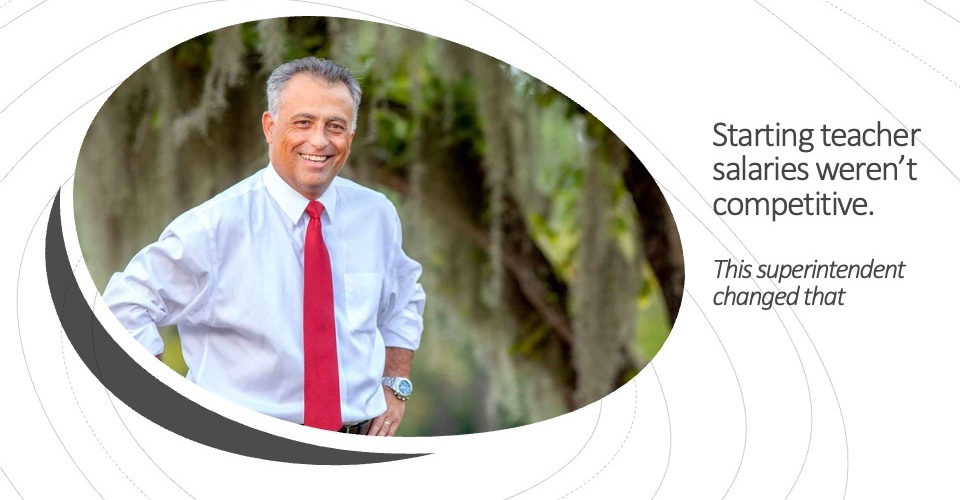One of the most important subjects schools teach—literacy—is linked to one of today’s most sought-after soft skills. Reading and access to books help students build resilience and can have a positive impact on overall mental and physical health, education and childhood development experts say.
Here is a look at what some recent research has found:
- Reading as a remedy: Children who read frequently self-report better mental health.
- Literacy motivates kids: Access to books that pique a child’s curiosity paves the way to academic success and builds empathy.
- Resiliency is a muscle: Resilience is a set of skills that can be developed and sharpened over time, including when children experience traumatic events.
- Classroom relationships are critical: Educators who cultivate positive connections with kids instill more security and confidence in children.
To help K12 leaders and their teams create these conditions, two experts—Michele Myers and Linda C. Mayes, authors of The Educator’s Guide to Building Child & Family Resilience—shared several strategies in a Q&A with District Administration. “An important part of mental health is having a positive self-identity and knowing who you are,” says Myers, a teacher-educator at Wake Forest University. “Books allow you to see that.”
“Reading lets children see that there are a thousand and one ways to go through this life,” adds Mayes, a professor of child psychiatry, pediatrics and psychology and director of the Yale Child Study Center. “It shows them how others experience life, deal with challenges and find opportunities.”
1. Explain how reading fosters better mental health and resilience.
Mayes: Multiple pathways link literacy and mental health. One is self-esteem, which is a major component of mental health. Reading grows your community and helps with stress regulation, which comes with remarkable health benefits. If you think you are the only one in the world who has ever experienced a certain situation, it can be incredibly stressful. It is a lonely experience if you cannot see others’ shared experiences.

The other piece that we should not underestimate is the ability to read and embrace a story. It is a good feeling to be immersed in a story and it gives children confidence. They feel confident when they can not only read but also when they can tell someone what they have read and engage in conversation. Data from the Scholastic Kids and Family Reading Report shows us that frequent readers are more likely than infrequent readers to report feeling proud and excited, while infrequent readers were more likely than more frequent readers to say they have felt lonely, sad or anxious. This trend carries onward in age as well: infrequent teen readers are more likely than frequent readers to say they feel nervous or anxious (50% of infrequent readers vs. 39% of frequent readers), sad or depressed (37% of infrequent readers vs. 25% of frequent readers), and lonely (30% of infrequent readers vs. 19% of frequent readers).

Reading lets children see that there are a thousand and one ways to go through this life. It shows them how others experience life, deal with challenges, and find opportunities. It also gives them a window into other people’s lives, teaching children important, health-promoting skills such as using their imagination and thinking of another person’s perspectives, especially when it comes to how another person is feeling.
Myers: An important part of mental health is having a positive self-identity and knowing who you are. Books allow you to see that. If a child never sees themselves reflected in the pages of a book, that tells them they are othered. But when they have literature that shows them positive aspects of their identity, culture, and things that are valued, they become a believer.
Rudine Sims Bishop’s work is foundational to our understanding of how reading fosters better mental health and acts as windows mirrors, and sliding glass doors for children. When we read books to children, we invite them to look into the windows of spaces where they may not have otherwise lived. We give them multiple ways of seeing the world and seeing themselves reflected in the world, which in turn gives them alternative perspectives.
2. How can educators intentionally make the connection between reading and mental health?
Myers: Literature allows children to understand themselves better. It can show positive aspects of identity, culture, and values. One of the things that I am passionate about is having a robust classroom library that offers many books reflecting the multiple ways of living within the world. These books can expand a child’s understanding of what it means to be one in a collective of others.
Educators need to build classroom libraries that have books reflective of positive, affirming messages about children and their worlds, cultures, and languages. This says to a kid: “I matter. Someone sees me. And I see myself reflected in this world.”
Mayes: It’s not only important for children to see themselves in a book but for children to see others. Reading creates a world that is more diverse than your own. Educators need to ensure that their classroom library has access to books that encourage kids to read widely, not only about themselves but about others, too.
3. How does literacy drive curiosity?
Mayes: Children are inherently curious. They come into the world curious. Curiosity is the engine that drives learning development and lifelong health. It keeps you open to possibilities to try something different. Our task as teachers, parents and adults is to make sure that curiosity thrives and flourishes alongside incidents of trauma and stress.
Rankings: Student-teacher diversity gaps are highest in these 11 states
Myers: Instilling the desire to learn in children is what we as teachers want to do. That is what we hope to accomplish every day. When children are engaged and curious about their education, they tend to learn more, behave better and thrive in classrooms.
When I work with educators, I encourage them to make sure that whatever topic they are discussing or studying is reflected in their classroom library. It is so important that students know where they can go to find answers to the questions they may have. Children must know that we as teachers will honor them and help them find the answers through literature.
4. Why does curiosity lead to academic success?
Myers: We want to teach children that it is OK to ask questions and that it is expected that you ask questions. This is how you create classroom communities that are safe and nurturing. We should see questions as a way to promote learning.
One of the things that I think is important when we work with kids is creating spaces where they can ask questions that matter to them, research to find the answers and challenge the answers that are not plausible. For example, if a child is told, “The earth is flat,” can that child do some research to find out those answers for themselves? We need to teach our children to not just accept answers that are given.
5. Why is empathy important for mental health and resilience?
Mayes: Empathy is a very complex cognitive response but essentially it is the ability to put yourself in another’s shoes and try to see their world from their perspective. Empathy builds relationships and communities. It is a key skill that helps kids learn how to make and maintain friendships. It is about bringing people together and is not about sympathy. Empathy is the ability to experience what another person is experiencing and relate to them.
Myers: It goes back to the African principle: I am because we are. When you can feel what someone else is feeling, you understand that our collective humanity resides in all of us being well, and realizing that we cannot go through life alone. When we understand this principle, we put our actions toward supporting whoever is the weakest link in our chain.
6. Should educators address specific events—such as the wars in Ukraine and Israel—as they help children process traumatic events?
Mayes: When we don’t talk about the things that children are hearing or what they are seeing on the news, it conveys the message that these are topics you cannot talk about openly. There are times when teachers will not know everything about the topic, but it is better to ask children about the questions and feelings they have.
The Israel-Gaza issue is especially challenging right now since it is so polarized, but fundamentally, children are being impacted on all sides. Encouraging kids to start thinking down to the level of how children and families are doing is critical. You have to talk about these things, or they become even more traumatic.
When we center the needs of our learners, we’re doing what is in the best interest of everyone involved. You’re not saying who’s right and who’s wrong. It’s a fine line to walk in our polarized world, but that’s where you want to be because you’re cultivating a resilience skill called altruism.
Myers: I think about one of the classroom teachers I used to co-teach with, Sara Suber. We talk about Sara’s great work in The Educator’s Guide to Building Child and Family Resilience, and how she always made space for kids to ask the questions that were on their minds. She never made her stance or opinion the only view that mattered. She allowed them to have opportunities to ask questions, to share their feelings and emotions, and for them to “Bring it to the Carpet.” They could bring anything to the carpet because she wanted them to know that it is OK to know that bad things happen in the world, but when you walk into the classroom, we are going to work through it together.
She created a space for the children where they could be vulnerable and open. For example, one of the students in Sara’s class had terminal cancer and the child died during the academic year. It was a traumatic event for all of them to experience but the children had a safe space to express their emotions, and Sara even took it a step further. She formed a connection with the hospital and encouraged the students to start fundraisers so that their money could be contributed to the hospital. Sara showed these children that we can use traumatic experiences to benefit others. Her students learned that we can do good, even when the bad things occur. We do not have to be stagnant.









